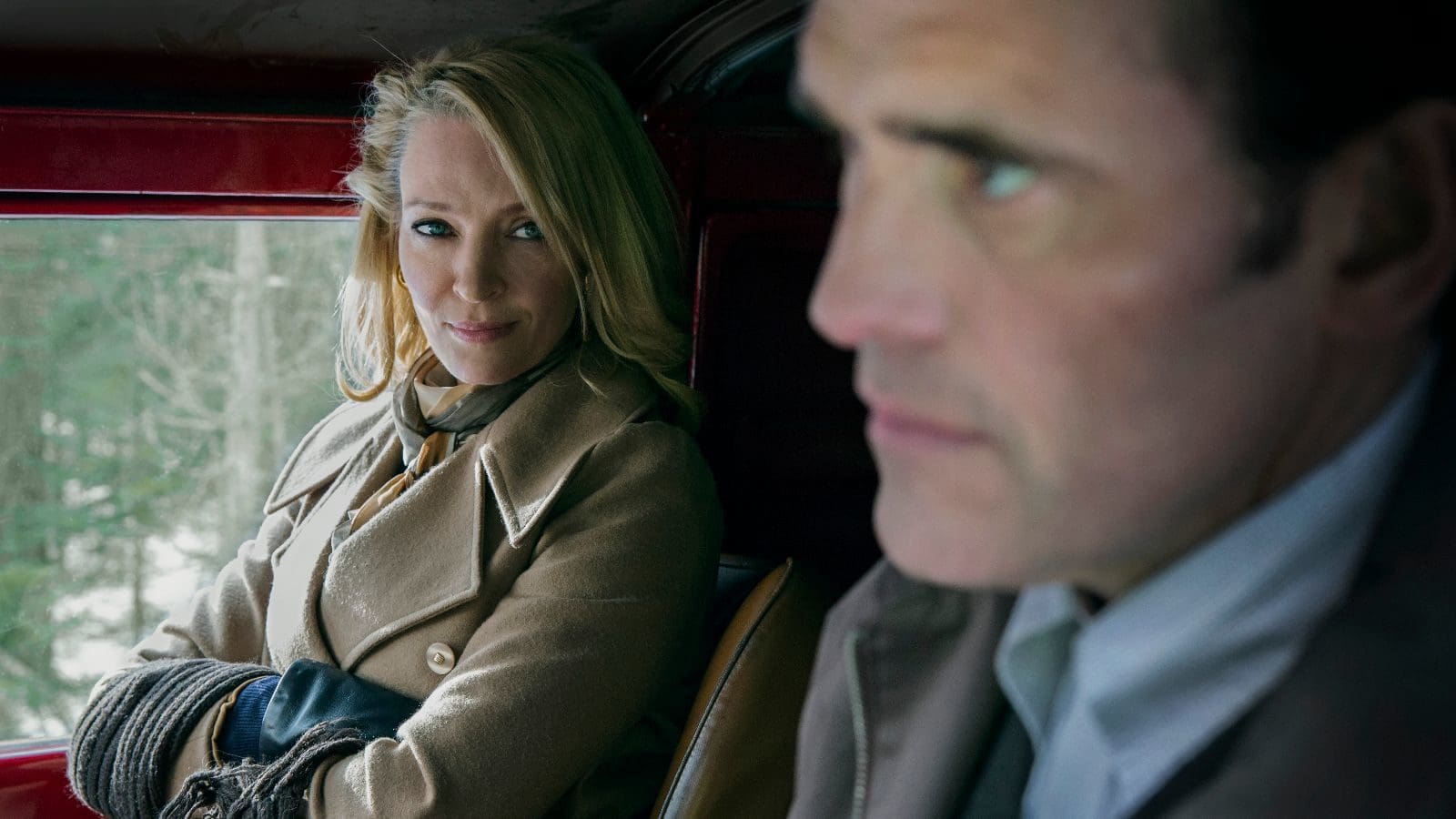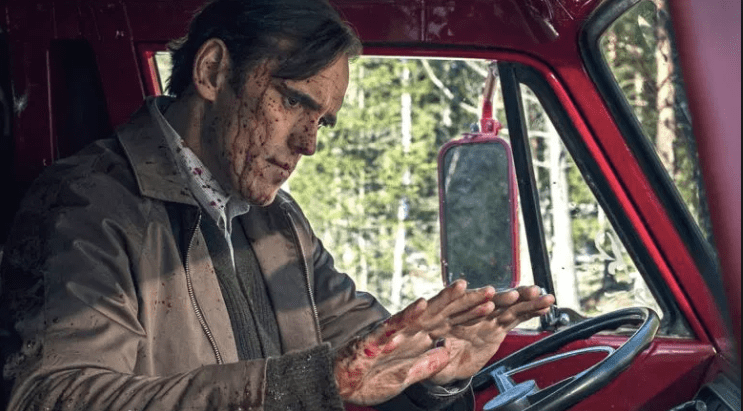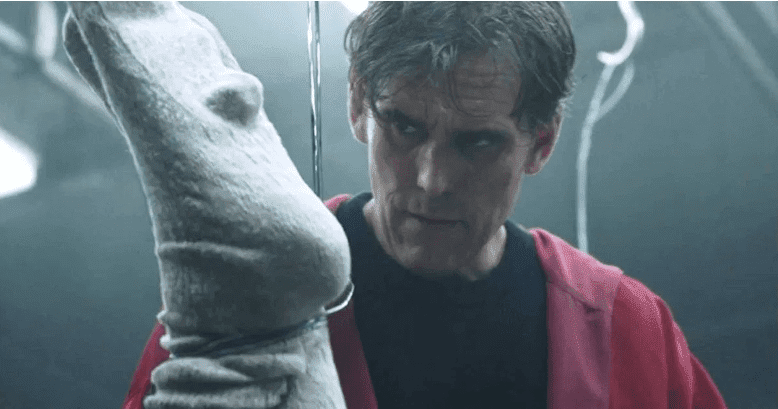
Every review you’ll come across, both positive and negative, of The House That Jack Built, will likely spend more time talking about the film’s director, Lars Von Trier, than the film itself. This is exactly what he wants.
The director’s first film since his “Depression Trilogy” (Antichrist, Melancholia, Nymphomaniac) in basically a decade, follows Matt Dillon as Jack, a serial killer who kills only for pleasure, recounting various murders he has committed over the course of his 12 years as a killer to a man named Verge, who, until the end of the film, is never seen, and is voiced by acclaimed German actor Bruno Ganz (most will remember him as Hitler from 2004’s Downfall). Although Jack has killed over 60 people, he has chosen to tell the tales of only five, referring to them as “The 5 Incidents.” The reasons why he has chose these specific five is never given, but I have my own theory.
In typical Von Trier fashion, the character of Jack (as played by Dillon) is a complete psychopath with no empathy whatsoever towards other human beings. He is completely devoid of any moral compass — except when putting on a facade for the sake of murdering. The murders that we are shown are brutal, unrelenting, and, in that way Von Trier always does, make the viewer extremely uncomfortable. At this year’s Cannes Film Festival, over 100 audience members walked out of its premiere due to the nature of the film’s content.
The hardest one to watch, in my opinion, is the second incident, where Jack convinces a woman played by Siobhan Fallon Hogan, a frequent collaborator of Von Trier’s, that he is an insurance salesman. He breaks into her home and strangles her unmercifully and slowly several times over several minutes. He then drags her corpse behind his truck so that her face becomes completely mutilated and detaches from her head — leaving a trail of blood along the road for several miles. I won’t go into detail on every killing, but they are some of Von Trier’s most violent and wince-inducing scenes of body horror since Antichrist.
The film has no protagonist — only an antagonist with no opposition. Unlike his other films, where Von Trier often asks us to feel empathy for the pitfalls of his main characters, this is a film that goes out of its way to make you hate Jack. And yet, it is compulsively watchable. Von Trier is a filmmaker who understands sevenfold that a viewer doesn’t need to like or emphasize with a character to find them interesting, or even sometimes, amusing.
To that extent, all the performances in the film are flawless. Dillion gives a career-best performance as the titular Jack. Riley Keough and Hogan stand out as the most memorable “incidents,” playing characters who are both effortlessly taken in by Jack’s facade — despite one character being extremely intelligent and the other extremely simple. Even Uma Thurman, who only appears for a few minutes, leaves a considerable impact, helping introduce us to the character of Jack in the beginning of the film.
The aforementioned sequence in the woman’s house is where the film shows off some of its pitch black dark humor. Early on, it is established that Jack is often putting himself in danger of getting caught due to his OCD and his obsession with cleanliness. After he strangles Hogan’s character in her house and wraps up her body in plastic, he keeps exiting his van and going back inside, remembering a spot he thinks he might have forgotten to clean blood from. He continues to do so even when he hears police sirens growing louder. This is also where Von Trier is testing the limits of his audience: if you can laugh at the shortcomings of a completely dispassionate serial murderer who, up until now, the director has told us we should find despicable, then he’s got you hooked.
See, the film isn’t really about Jack. It’s about Von Trier and how he sees himself, his career, and art in general. It’s easy to make out pretty early on that, when Jack explains that he sees his murders as art, the character is a mouthpiece for the director. Furthermore, the house Jack is attempting to build is obviously representative of Von Trier’s filmography and perhaps even his personal life.
The storytelling format is very similar to Von Trier’s previous effort, Nymphomaniac, in which a character narrates stories to another character with little splices of misanthropic philosophy thrown in here and there, edited to what are basically slideshows are correlating images. While that film had fly fishing and math, this film has replayed clips of pianist Glenn Gould, something about tigers, and debates about the differences between an architect and an engineer. Verge often asks Jack directly about the meaning of the abstract images scene on screen, making it clear that Von Trier is making breaking the 4th wall.
And about half way through, you’ll realize the film has no traditional foundation of dramatic storytelling. Until the very end, when Jack has a run-in with police, there is no major conflict except the character’s own insecurities. Von Trier is a filmmaker who prides himself on unconventional presentation (another example is when we are shown the 60+ bodies in Jack’s freezer and the camera spins around at high speed for about a minute instead of a simple wide shot) and he wants you to know it.
Throughout his career, Von Trier has often been accused of being a misogynist, despite almost always making films with women at the center. The #MeToo movement recently caught up to him when Icelandic singer Björk accused him of sexual harassment during the filming of Dancer In The Dark. I believe this is why Jack only tells the stories of when he murders women, despite killing both men and women on a regular basis. The women (and in one case, her children) in this film are beaten, bloodied, mutilated, and abused for the entertainment of both the central characters, the audience, and maybe, depending on how you see it, Von Trier.

It could be the case that either A) Von Trier is fed up with the accusations that he hates women and has given up trying to defend himself, or B) is only fueling the flames of these accusations because they will validate his own self-hatred. There’s a quote Jack says towards the middle of the film that sticks out in my mind: “If glorification could demean a work, why should destruction?”
Now, as pretentious as this all sounds, the film works because once you realize it’s not about a story, the fun of it becomes putting together the pieces of Von Trier’s philosophical puzzle. I think he’s asking two primary questions. First, does an artist get a pass for being up their own ass–as many often accuse Von Trier of being–if they are aware of it? And second, does an artist of any kind, not just a cinema director, have an obligation to respect their audience?
On that second question, take, for example, the sequence in which Jack explains, since he believes murder is art, that some of the world’s greatest dictators such as Mao, Hitler and Stalin are also some of the world’s greatest artists, is juxtaposed with various clips from other Von Trier movies (yes, really). Unless Von Trier’s self-hatred is so colossal that he honestly believes he is on par with these individuals, this has to be him toying with the audience’s own expectations of himself.
The final 20 or so minutes of The House That Jack Built goes down an unexpected, but quite fitting rabbit hole, with Von Trier borrowing from himself again, in a formula almost identical to the end of his 2003 “documentary” The Five Obstructions. In that film, Von Trier challenged filmmaker Jorgen Leth to recreate his short film The Perfect Human five times, each time under a different set of circumstances and each time with Von Trier’s strictly prescribed rules, A.K.A. “obstructions.” Surprise, surprise, the fifth obstruction was the documentary itself, with Jorgen as the subject.

Here, the “5th Incident” winds up not being an incident at all (or, depending on your interpretation of the final scene, Jack is the 5th incident), as Jack gets cornered by police just as he is about to attempt to take out 5 people with one full metal jacket bullet. He stumbles into the previously unopened backroom of his freezer, where he finally comes face to face with Ganz’s Verge. He tells Jack that he’s been approaching the building of his house all wrong, and he decides to literally make a house out of dead bodies in the back of his freezer while cops begin to bust their way in. So, if we are to believe that Jack is Von Trier, then it is a work of bodies to represent a body of work.
Jack and Verge enter the house, descend down a hole in the floor that has appeared out of nowhere, and the film becomes what is likely the best visual depiction of Dante’s Inferno there’s yet to be. As Jack and Verge explore the circles of Hell, much of the narration and conversations from the film are repeated, bringing question to the film’s timeline, or whether or not there is even a timeline to figure out at all. Von Trier uses the same super slow-motion we saw in Antichrist and Melancholia for some of these scenes, and with the super bold reds and blacks, these are some of the most beautiful images Von Trier has made in his career. There is one particular shot of Verge and Jack standing on a rock surrounded by water and nude figures that is worthy of being blown up and hung in a museum. For as many times as Von Trier is repulsive and gruesome in his cinema, the purely visual aspect of his work can often be just as striking.
I will not completely spoil the film’s ending. I could probably write another 1000 words about the final scene and the third act as a whole. Maybe I will at a later date. For now, let’s settle with this: as the ending of Jack’s story, it makes complete thematic sense and is one of the best instances I’ve seen of a character getting their karma. As an ending to a story that’s really about the director, it raises a lot of questions concerning the future of his career and him as a person. Honestly, despite how entertaining(?) it can be to watch Von Trier muse about himself in this way, I hope he is in a good mental state. Many have said they believe this will likely be his last film, and while I hope that isn’t true, it wouldn’t be surprising.
YouTube reviewer YourMovieSucks said in his review of this film that Von Trier has stopped making regular movies, and now he just makes “fuck you movies”. I see his point, but I’m not sure I agree. Lars is in the senior stages of his career. He’s been making feature films for almost 35 years, and shorts and experimental films for over 50.
The House That Jack Built is his cinematic confessional. He’s reflecting on his long career and seemingly highlighting all the regrets. For a man who is so often thought of as having a galaxy-sized ego, he appears to be using it to point out nothing but his insecurities. The emperor has a lot of clothes, but it seems he doesn’t like them very much.
Rating: 9/10
Closing note: This was a review of the R-rated cut of the film, which was not the version shown at the Cannes Film Festival, and also not the version shown in the one-day-only theatrical release that happened at the end of November. It is a travesty and an offense to audiences that the MPAA, an organization essentially founded on censorship, has decided to delay the release of the uncut version until the summer of 2019. Apparently, the uncut version runs only 4 minutes longer than this version, so I am dying to know what could possibly happen in those 4 minutes that they have decided to put a last-minute, temporary ban on it. I am considering doing a follow-up review of the uncut version when it finally sees the light of day.

